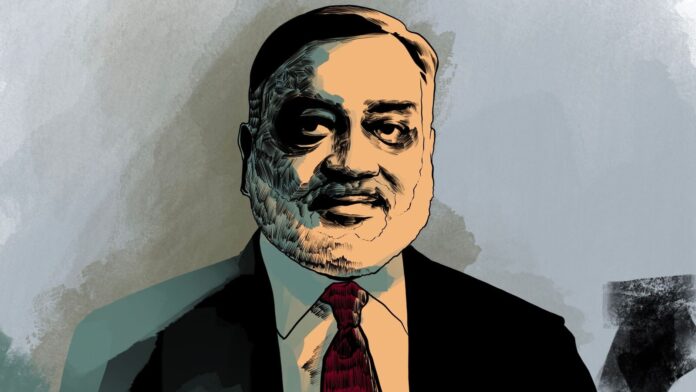Parthasarathy, by contrast, hasn’t copped as much of the blame despite the fact that Infrastructure Leasing & Financial Services (IL&FS), the non-banking financial institution (NBFC) he had joined as president and CEO in 1987, would by 2017 become a byword for financial skulduggery of a scale rarely seen before or since.
Promoted by the Central Bank of India along with UTI and HDFC, IL&FS had auspicious beginnings as a trendsetter of the public-private partnership (PPP) model, with Parthasarathy as its principal driver. By then, the IIM Ahmedabad alumnus and former Citibanker had already cemented his reputation as an entrepreneur, having co-founded 20th Century Finance.
It was one of his many skills. Networking was another. Shrewdly, he brought in senior bureaucrats to head the dozens of special purpose vehicles through which IL&FS executed various projects and, of course, concealed its real financials.
Parthasarathy had hoped that since most of the projects were of national importance the government would step in to help. It didn’t. You could count him unlucky on that score or naive or simply reckless and arrogant.
By the early 2000s, the company was the go-to organization for governments at the Centre and in the states. Roads, ports, power, water, environmental infrastructure, nothing was beyond the scope of IL&FS’s capabilities. In a delicious bit of irony, when Satyam Computers collapsed following its own ₹15,000 crore scam, the government turned to IL&FS to bail out Maytas Infra, the real estate group that was at the root of the IT company’s woes. Parthasarathy, who could sniff a deal, bought the company for a song.
Also Read: What Satyam, IL&FS and DHFL tell us about insolvency resolution
With the deals adding to the Parthasarthy legend, the original investors in IL&FS, were joined in subsequent years by other heavyweights, including Orix Corporation, Japan and the Abu Dhabi Investment Authority.
Digging a deep hole
But all of this was great only for public consumption. Along with the bridges and the roads it was constructing, IL&FS was also digging a deep hole for itself. The problem was simple. Most of the projects it undertook had long gestation periods.
A toll road takes years to build and for toll revenues to start coming in. But to raise the necessary capital it had taken short duration loans which came due well before its revenue stream started.
Parthasarathy had hoped that since most of the projects were of national importance the government would step in to help. It didn’t. You could count him unlucky on that score or naive or simply reckless and arrogant.
When he quit as chairman in July 2018 citing declining health, it should have been a warning that something was amiss. Subsequent events showed that the dam of debt was about to burst and Parthasarathy, who always had impeccable timing, had bailed out just before disaster struck. Once the defaults started, the extent of indebtedness revealed itself. Investigators would later find a maze of 348 subsidiaries which contributed to a debt pile of some ₹91,000 crore.
The modus operandi had been simple: the parent company raised debt which, it invested as equity in each subsidiary. The subsidiaries in turn raised further debt. The credit rating agencies that had assigned AAA ratings to the securities were, as usual, caught napping.
By October 2018, with the financial markets on edge and rumours of banks collapsing under the weight of unpaid loans, the government replaced the entire board with a new six-member board led by ace banker Uday Kotak. Its main job was to unravel the complex matrix in which IL&FS was merely the holding company for dozens of firm’s several subsidiaries and various joint ventures. Of its total debt, ₹57,000 crore was owed to public sector banks. However, the biggest direct damage from the collapse of IL&FS was suffered by corporations like the DHFL, which went through its own meltdown.
Parthasarathy was arrested by the enforcement directorate in 2021 on charges of embezzlement. In hearings on the case, the Madras high court said that he along with the other petitioners were accused of siphoning off “huge sums of money, in the form of salary and perquisites by holding the post of Directors and with the aid of it, had purchased very many immovable properties across the globe.”
By now, the man was too ill to offer much defence. In April 2022, he passed away, and in November of the same year, the special Prevention of Money Laundering Act (PMLA) court closed the money laundering proceedings against him.
#unravelling #financial #titan #Ravi #Parthasarathy #ILFS #scandal
